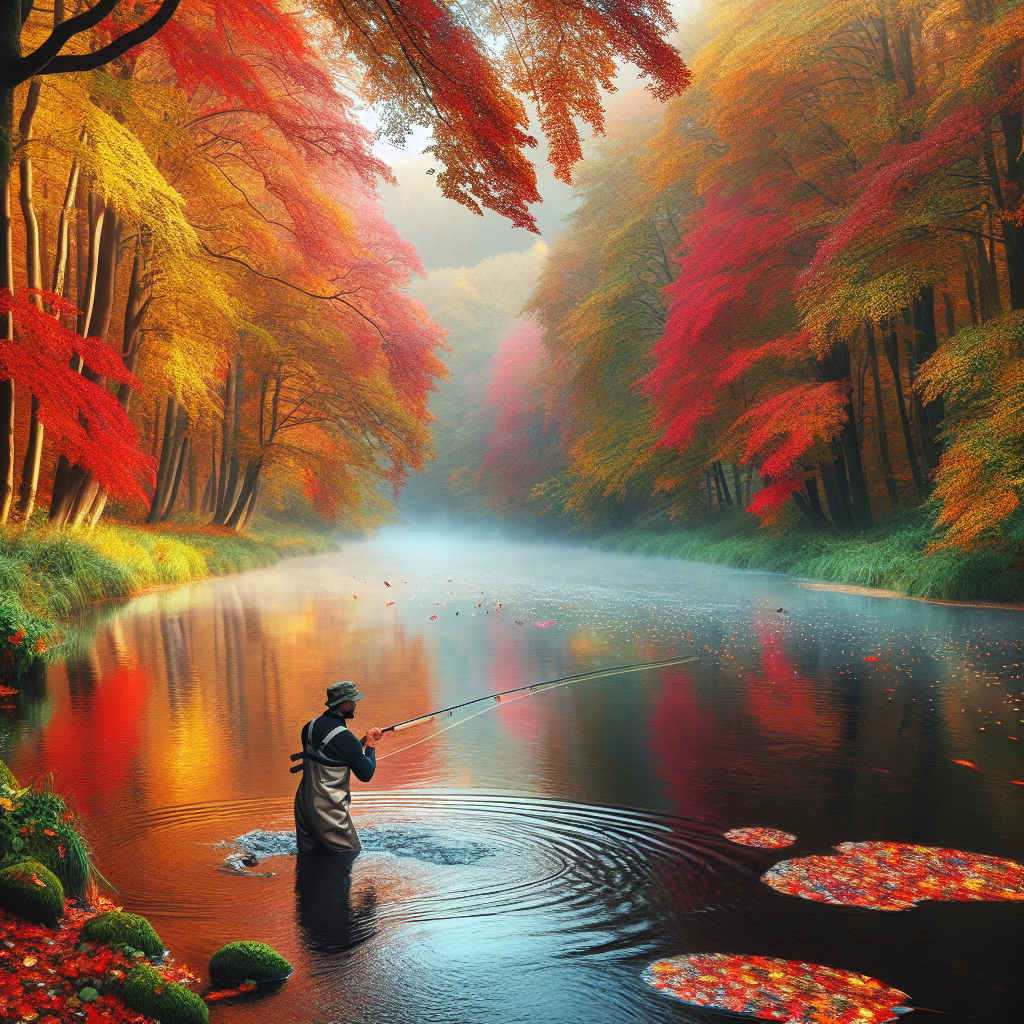Introduction
There’s a special kind of magic that descends upon rivers and lakes as summer gives way to autumn. The air gets crisper, the foliage paints the landscape in vibrant hues, and the waters promise a unique fly fishing experience. In this article, we’re going to delve into the heart of autumn angling. You’ll gain insights into the nuanced techniques and gear that can help you thrive in the fall fly fishing season. So, grab your waders and prepare to be immersed in the art of autumn fly fishing.
Understanding Autumn Fly Fishing
Autumn fly fishing is like a dance with nature, where timing and technique are key. As the season turns, fish become increasingly attuned to the changing environment. Their feeding habits shift in preparation for the colder months, and they become more selective about what they eat. This means that your summer strategies won’t always cut it. You’ll need to understand the fish’s autumnal behaviors and how to adapt to the cooler water temperatures, shorter days, and often clearer waters.
Essential Gear for Autumn Fly Fishing
The right gear can make or break your autumn angling experience. From rods and reels to waders and boots, you’ll want to ensure that your equipment can handle the challenges of fall fishing. Layering is key when it comes to clothing—think moisture-wicking base layers and warm, waterproof outerwear. Don’t forget gloves and a hat to keep the chill at bay. And of course, your tackle box should be stocked with the right fly patterns and accessories to match the autumn hatch.
Fly Selection for Autumn Waters
Choosing the right flies in autumn is both an art and a science. You’ll need to consider the active insect hatches, which tend to slow down as the season progresses, and the fish diets that turn more towards baitfish and other larger prey. Streamers, nymphs, and late-season dry flies are your go-to patterns. Some effective flies to carry include the Woolly Bugger, Pheasant Tail Nymph, and Elk Hair Caddis. It’s all about matching the hatch and the natural prey in the water.
Casting Techniques for Fall Fishing Conditions
The blustery winds and variable weather of autumn require a shift in your casting techniques. You’ll need to adjust your casting stroke to handle the wind and practice different casts to navigate around obstacles like overhanging branches and leaf litter. Roll casting can become your best friend during fall, especially when the water levels are lower and space is limited. It’s all about being adaptable and ready to switch up your approach at a moment’s notice.
Reading Autumn Rivers and Streams
As leaves begin to dot the surface of rivers and streams, reading the water becomes a bit more complex. However, this is also a time when fish can become more predictable in their locations. Look for areas where leaves gather—these can often indicate slower sections of water where fish might be holding. Also, pay attention to the depth and speed of the water, as fish may seek refuge in deeper pools or runs with a steady flow. Recognizing these autumnal patterns is key to finding success on the water.
Stealth and Patience: Approaching Skittish Fish
Autumn fish can be skittish, thanks to the clearer water and their increased wariness as the breeding season approaches. This means that stealth is your greatest ally. Approach fishing spots with care, avoid sudden movements, and consider your shadow and silhouette. Patience is also paramount. You may need to wait for the perfect moment to cast, or for a fish to settle back into its feeding pattern after being disturbed. Remember, the fish are just as aware of you as you are of them.
Presentation and Retrieve Strategies
The presentation of your fly can make all the difference in enticing a strike. In autumn, it’s important to mimic the natural prey as closely as possible. This might mean letting a nymph drift naturally with the current or giving a streamer the occasional twitch to imitate a wounded fish. Varying your retrieve can also provoke a response from a hesitant fish. Sometimes a slow, steady retrieve works best; other times, a series of quick, erratic pulls is what triggers a bite.
Conservation and Ethics
As fly fishers, we have a responsibility to the environments we enjoy. That means practicing catch and release with care, using barbless hooks, and handling fish with wet hands to protect their slime coating. It’s also crucial to stay informed about local regulations and to respect closed seasons, which are often in place to protect spawning fish. By being ethical anglers, we ensure that these waters can be enjoyed for generations to come.
Closing Thoughts
Mastering autumn fly fishing is about embracing change and refining your approach to meet the demands of the season. Remember to prepare your gear for cooler conditions, select flies that reflect the autumn hatch, and adjust your techniques to the whims of the weather and water. With these tips in mind, the fall can be one of the most rewarding times to fly fish. So, wade into the crisp, autumn waters and experience the thrill of the season.

